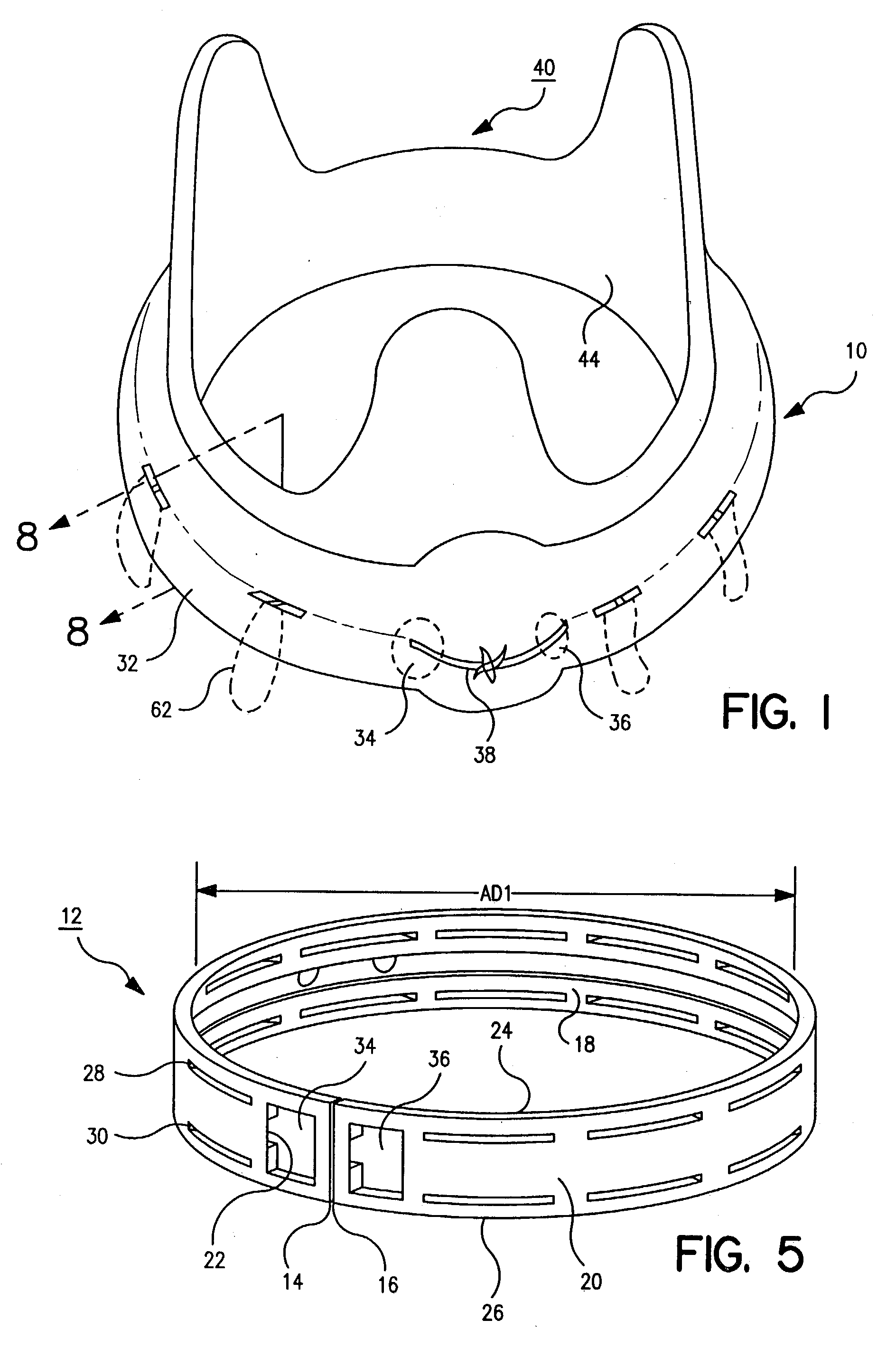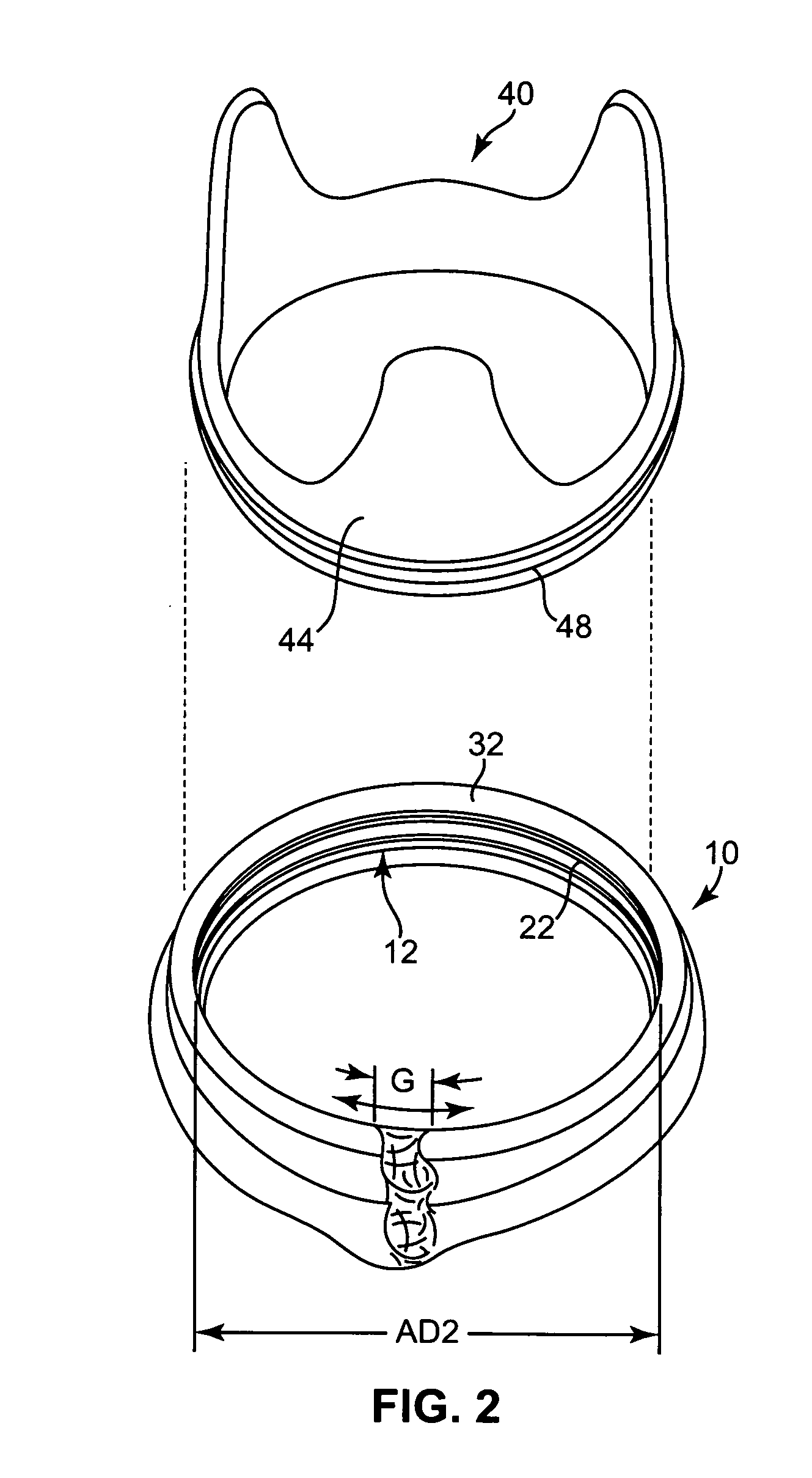Suturing rings for implantable heart valve prostheses
a technology of suture rings and heart valves, which is applied in the field of suture rings for implantable heart valve prostheses, can solve the problems of reducing the durability of the valve annulus, affecting the implantation and replacement of the valve, so as to facilitate the initial implantation and replacement, not diminish the valve annulus, and enhance durability. the effect of durability
- Summary
- Abstract
- Description
- Claims
- Application Information
AI Technical Summary
Benefits of technology
Problems solved by technology
Method used
Image
Examples
Embodiment Construction
[0064]The present invention can be implemented to improve implantation procedures and performance of a wide variety of heart valve prostheses of the various types currently existing or that may come into existence that are surgically attached to a prepared valvar rim. As noted above, the present invention involves improved suturing rings that support removable heart valve mechanisms, e.g., tissue valves and mechanical heart valves comprising a heart valve frame and occluder. The valve frames described in the exemplary embodiments are a tissue valve stent or a mechanical valve body, and the occluders include tissue leaflets of a tissue valve or pivotal disk or leaflets of a mechanical heart valve. The various aspects of the present invention may be utilized in attaching any such valve frame or any other valve frames that are devised in the future to a suturing ring.
[0065]Thus, for example, FIGS. 1–3 depict a suturing ring 10 that is employed to support a fabric covered stent 40 of a ...
PUM
 Login to View More
Login to View More Abstract
Description
Claims
Application Information
 Login to View More
Login to View More - R&D
- Intellectual Property
- Life Sciences
- Materials
- Tech Scout
- Unparalleled Data Quality
- Higher Quality Content
- 60% Fewer Hallucinations
Browse by: Latest US Patents, China's latest patents, Technical Efficacy Thesaurus, Application Domain, Technology Topic, Popular Technical Reports.
© 2025 PatSnap. All rights reserved.Legal|Privacy policy|Modern Slavery Act Transparency Statement|Sitemap|About US| Contact US: help@patsnap.com



